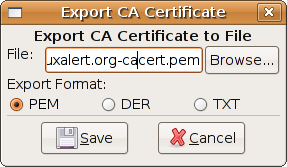Weather Station X-mas present
I've got a Weather Station WS-2036 from my wife as X-mas present. It can measure temperature, pressure, wind speed and direction, and rain. The best of all, it is possible to connect to a PC using the serial port. It is bought in the Swedish shop Jula and is working with Linux and Ubuntu. Of course the package says nothing about Linux, Julas site says nothing, Heavy weathers site which the package refers to is equal bad. After some investigation I found out the the manufacture is actually La Crosse . All La Crosse weather stations WS-23XX should be compatible with the free software open2300 . Since I now have got my first moment alone since I got it I took the chance to test it. I reinstalled my lab-machine with Ubuntu 7.10 (Gutsy Gibbon). Installed the build-essential package. Downloaded Open2300 and compiled it, just write make. It worked out of the box. I think Open2300 will be a good candidate for me to provide through Ubuntu PPA . Open2300 contains a kit of different small ...







